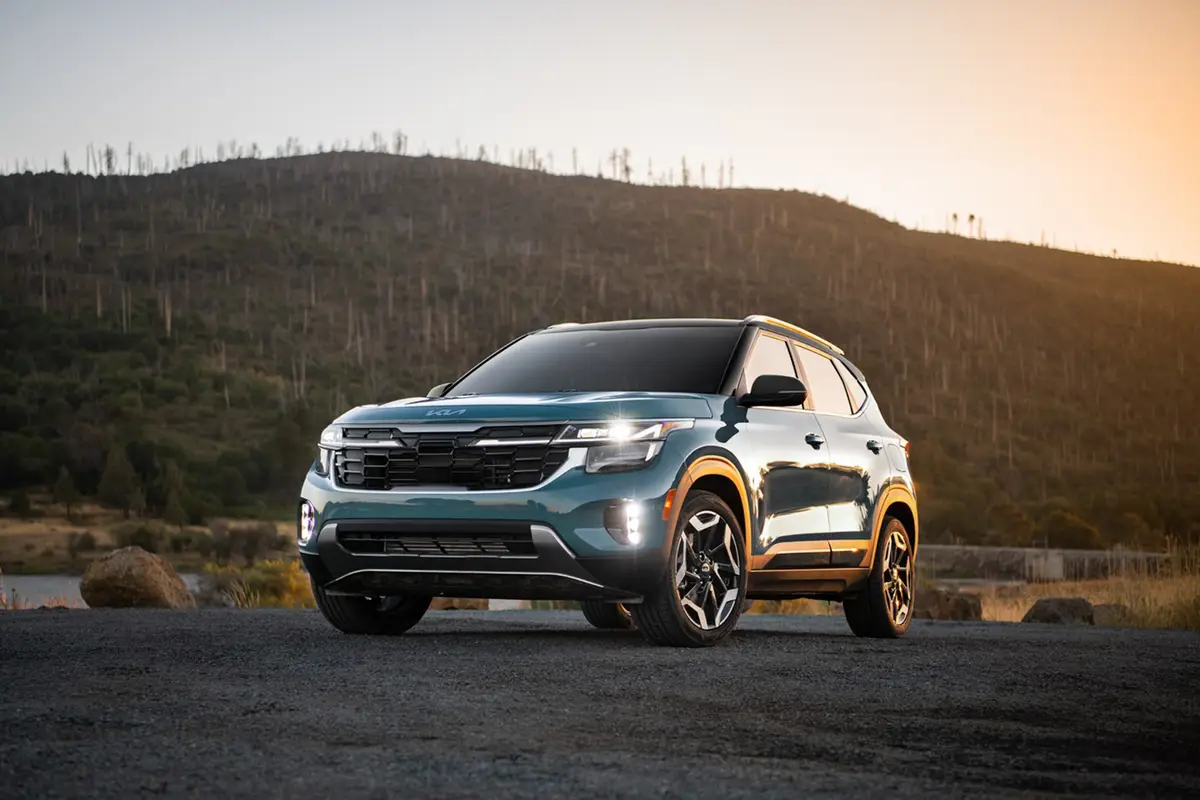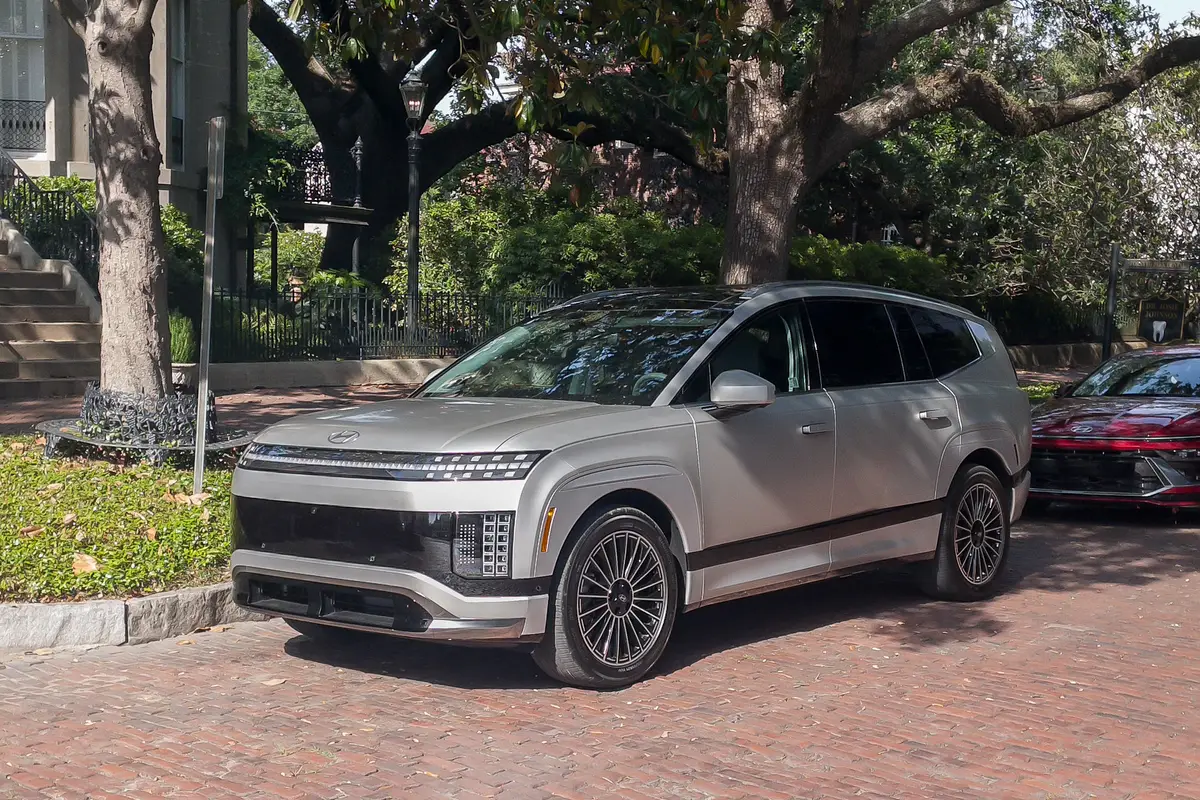Star-Telegram.com's view
Nissan calls its new Versa subcompact the cure for “autoclaustrophobia.” In clever TV ads that follow the format of prescription-drug commercials, Nissan shows “autoclaustrophobia” sufferers stuffed inside sardine-can cars, then cured of the disease by getting into the Versa.
The ads even have a tagline similar to that of the drug spots – “Ask your Nissan dealer if the Versa is right for you.”
And there is the fine print at the bottom of the ads, giving us not the terrible side effects of a drug, but the enlightening fuel economy of the Versa – up to 36 miles per gallon.
Nissan says the ads are intended to help the Versa stand out in an all-of-a-sudden crowded field of affordable, gas-sipping new subcompacts.
Both Honda and Toyota have added subcompacts to their lineups for 2007, as well – the five-door Honda Fit hatchback and the Toyota Yaris, which comes in a four-door sedan and five-door hatchback.
The Versa, Fit and Yaris join four others already on the market, including the redesigned, segment-leading 2007 Chevrolet Aveo, and the Hyundai Accent, Kia Rio, and Suzuki Reno.
Among all of that competition, the Versa needed something to help differentiate it, so Nissan devised the car’s ads to mimic the spate of drug spots that are peppering our TV screens of late.
Although the ads might be funny, they make a great point: The Versa is not one of those cramped econoboxes that automakers intend for people whose transportation budgets are challenged.
No, this is a car that’s quite roomy and comfortable inside, thanks to its heritage. Although it’s brand-new to the U.S. market, in Japan, it’s not a new vehicle at all – it’s one of that nation’s most-popular small luxury cars, a few cuts above entry level.
Here, prices begin at just over $13,000 for the five-door hatchback, which we tested. A four-door sedan is scheduled to arrive in January.
Besides the great price and roomy interior, the car has EPA ratings of 30 miles per gallon in the city and up to 36 mpg on the highway with the optional continuously variable automatic transmission, and 30 city/34 highway with the standard six-speed manual gearbox. With the optional four-speed traditional automatic transmission, the ratings are 28 city/35 highway.
With those ratings, this vehicle is almost as economical to operate as the lower-end gasoline-electric hybrids, the Honda Civic and Toyota Prius. Yet it’s about half the price of those two, so the savings are realized not only at the gas pumps but in the monthly car-payment check.
All Versas are powered by a 1.8-liter four-cylinder engine that turns out 122 horsepower and 127 foot-pounds of torque – giving the car a lot of pep thanks to its light weight.
And even its power sets it out from the rest of the pack. The Yaris, for instance, has 106 horsepower, and the Fit 108 horsepower. Both of those vehicles have similar starting prices and EPA ratings. The Versa has more power than its other competitors as well. The Versa seems to be a lot more expensive than it is, and consumers will forget that they’re driving a car whose primary goal is to save them money.
Bringing in a car that’s sold as a premium model in Japan ensures that the Versa “doesn’t compromise on styling, performance or versatility,” Nissan Senior Marketing Manager Joe Samfilippo said during a media ride-and-drive event for the vehicle.
In Nissan’s car lineup, which is just about all new for 2007, the Versa comes in just under the Sentra sedan in size and price. The Sentra, which long has been Nissan’s entry-level vehicle in the U.S. market, has been redesigned for 2007, and is now larger and more upscale.
That left a “void in the sub-$14,000 price range” for Nissan, Samfilippo said, which the Versa fills nicely.
Subcompacts are one of the fastest-growing vehicle segments, thanks in part to inflated gasoline prices. More than 1.9 million vehicles in this class were sold in the U.S. market last year, which was 11 percent of total U.S. new-vehicle sales. Those figures should increase dramatically over the next year with the three new entries from the Japanese big three automakers now on the market.
Most of the small cars on the market today are “cramped, sparsely equipped and underpowered,” Samfilippo said. Instead of adding to that mix of dubious products, the Versa offers “class-leading interior space and comfort, with upscale quality and amenities,” he said.
And it fits with Nissan’s new across-the-board sedan strategy, which promises “no weak spots,” Samfilippo said.
Even the back seat is comfortable in the Versa. Full-size adults can sit three-across, and there is ample leg room. Because of the hatchback arrangement, there is room for lots of cargo even with the back seat in place; fold it down, and the space increases dramatically.
Also in keeping with a new Nissan strategy, the car has a well-thought-out interior design, with high-quality components that include soft-touch materials that usually are found only in premium cars, the company said.
That includes well-padded seats and double-stitching for the upholstery. Nissan designers used the flagship Maxima sedan as their benchmark for the Versa’s interior, Samfilippo said.
The Versa comes in four trim levels.
The base model is the 1.8 S version ($12,550 plus $615 freight). It comes with a six-speed manual gearbox. Next is the 1.8 S with the four-speed automatic ($13,350), which we tested, followed by the 1.8 SL with the six-speed manual ($14,550), and then the top-of-the-line 1.8 SL with the continuously variable transmission ($15,550).
The top model with all available options runs about $17,000, but Nissan expects the volume-seller to be the base model with the regular automatic transmission. The six-speed manual transmission is one that was designed and built by France’s Renault, which holds a controlling interest in Nissan.
Standard features on even base models include air conditioning, tilt steering wheel, 15-inch steel wheels, power outside mirrors, rear-window defrost and a 120-watt single-disc AM/FM/compact-disc audio system.
Among available options are Sirius or XM satellite radio (buyer’s option), antilock brakes (available on all trim levels), and upgraded audio systems, including a 180-watt system with a six-disc in-dash CD changer.
The 180-watt system is standard on the SL models, along with cruise control, 15-inch alloy wheels, and power windows and door locks with remote. A further upgrade adds a Rockford Fosgate subwoofer and premium Clarion speakers.
Included on all models are front seat-mounted side air bags, along with overhead side-curtain air bags for front and rear passengers.
The Versa’s chassis architecture was developed jointly by Nissan and Renault, and also is used on a Renault model sold in Europe and other world markets. The Versa is built in Nissan’s factory in Aguascalientes, Mexico, and is sold in Mexico and other world markets as the Tiida.
Our 1.8 test model came with several options, including a power package ($700), which tacked on power door locks and windows (with one-touch up and down feature), remote keyless entry and pushbutton start (usually found only on expensive cars), illuminated glovebox, and front and rear door-mounted storage pockets.
Other extras included antilock brakes ($250), which also feature electronic brakeforce distribution and brake assistance; and carpeted floor and trunk mats ($150).
Total sticker, including freight and options, was $15,065. That included the four-speed automatic transmission. With the base manual gearbox, our car would have cost $800 less. We would liked to have had cruise control, but that is not offered on the S models.
Oddly, the audio upgrades and satellite radio are not offered on the base models. Our car came with the 120-watt audio system and single-disc CD player, but there was a jack to plug in my iPod.
The fuel tank holds 13.2 gallons of gasoline, and unleaded regular is acceptable.
G. Chambers Williams III is staff automotive columnist for the San Antonio Express-News and former transportation writer for the Star-Telegram. His automotive columns have appeared regularly in the Star-Telegram since 1995. Contact him at (210) 250-3236; chambers@star-telegram.com.
At a Glance: 2007 Nissan Versa hatchback
The package: Economy subcompact, five-door, four-cylinder, front-drive, five-passenger hatchback. Highlights: All new for 2007, this is now Nissan’s entry level car, just under the compact Sentra in the company’s lineup. It’s surprisingly roomy and quite well-equipped for an economy car, thanks to its heritage as a luxury car in Japan. A sedan model will arrive early next year. Negatives: No engine upgrade offered for those who want a sportier driving experience. Engine: 1.8-liter inline four-cylinder. Transmission: Six-speed manual, four-speed automatic (optional), continuously variable automatic (optional). Power/torque: 122 horsepower/127 foot-pounds. Brakes, front/rear: Disc/drum (antilock optional). Vehicle stability control: Not offered. Length: 177.5 inches. Cargo capacity: 16.9 cubic feet (behind rear seat); 50.4 (rear seat folded). Curb weight: 2,722-2,779 pounds. Fuel capacity/type: 13.2 gallons/unleaded regular. EPA fuel economy: 30 miles per gallon city/34 highway (manual), 28 city/35 highway (4-speed automatic); 30 city/35 highway (CVT). Major competitors: Honda Fit, Toyota Yaris, Chevrolet Aveo, Hyundai Accent, Kia Rio, Suzuki Reno. Base price range: $12,550-$15,550 plus $615 freight and options. Price as tested: $15,065 including freight and options (1.8 S model, 4-speed automatic). On the Road rating: 9.3 (of a possible 10).
Latest news



